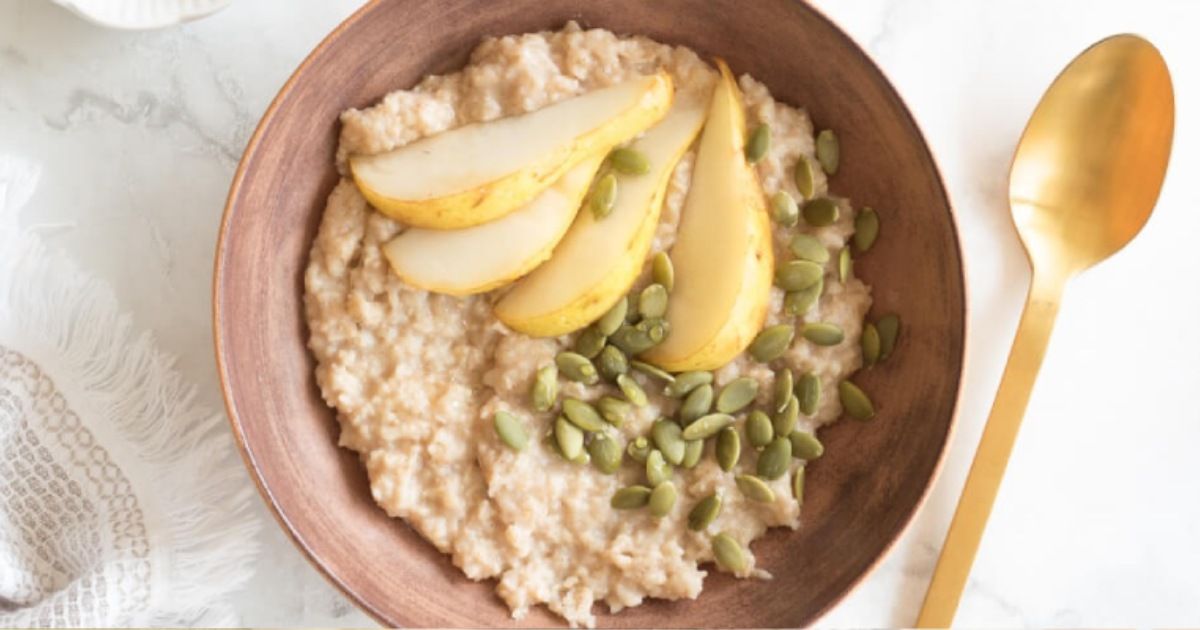Harnessing the Power of Fall Produce to Support Blood Sugar Health
Many autumn fruits & vegetables are packed with nutrients and have a low glycemic index
As fall sets in and the temperature drops, the allure of warm, hearty meals becomes irresistible. But for those managing diabetes or prediabetes, choosing the right ingredients is essential to maintaining stable blood sugar levels while still enjoying the flavors of the season.
The good news? Many autumn fruits and vegetables are nutrient-dense and have a low glycemic index, making them perfect for blood sugar management. This month, we’re diving into how you can incorporate seasonal produce into your meals to enjoy the best of fall’s harvest while supporting your health.
1. Pumpkin: A Seasonal Favorite with Blood Sugar Benefits
Pumpkin is synonymous with fall, and it’s packed with nutrients that are great for everyone—especially those managing diabetes. Despite its natural sweetness, pumpkin has a relatively low glycemic load when consumed in moderation. It's rich in beta-carotene, which converts to vitamin A, and also contains fiber, which can help regulate blood sugar levels by slowing down digestion.
Diabetes-Friendly Recipe Idea: Pumpkin & Lentil Curry
- Ingredients:
Pumpkin puree, red lentils, coconut milk, diced tomatoes, garlic, ginger, and curry spices.
- Instructions:
Sauté garlic and ginger, then add the spices, pumpkin puree, lentils, and coconut milk. Simmer until the lentils are tender. This dish is high in fiber and plant-based protein, making it satisfying and supportive of balanced blood sugar levels.
2. Apples: A Sweet Treat That Supports Health
Apples are abundant in October and provide soluble fiber in the form of pectin, which can help slow the absorption of sugar and improve digestion. While whole apples are a great snack, pairing them with a protein source like nut butter or yogurt can help minimize spikes in blood sugar.
Diabetes-Friendly Recipe Idea: Baked Cinnamon Apples with Greek Yogurt
- Ingredients: Sliced apples, cinnamon, a pinch of nutmeg, a drizzle of honey (optional), and plain Greek yogurt.
- Instructions: Bake the apple slices with cinnamon and nutmeg until tender. Serve warm with a dollop of Greek yogurt for added protein and a creamy texture.
3. Squash: Low in Carbs, High in Flavor
Winter squash varieties such as butternut and acorn squash are lower in carbohydrates than potatoes but still provide a creamy, comforting texture. Squash is also high in fiber, which helps manage blood sugar levels. Its natural sweetness pairs well with savory spices and can be used in a range of dishes.
Diabetes-Friendly Recipe Idea: Stuffed Acorn Squash with Quinoa and Spinach
- Ingredients: Acorn squash, cooked quinoa, spinach, garlic, onion, and a sprinkle of parmesan cheese.
- Instructions: Roast halved acorn squash until tender, then stuff with a mixture of quinoa, sautéed spinach, and garlic. Top with a light sprinkle of parmesan cheese and bake for an additional 10 minutes. This nutrient-dense dish provides a balance of fiber, vitamins, and minerals.
4. Sweet Potatoes: Naturally Sweet & Nutrient-Dense
Sweet potatoes are rich in complex carbohydrates and fiber, which contribute to a steady release of energy and minimal impact on blood sugar. They’re also loaded with vitamin C and potassium, which can help manage blood pressure and support overall heart health.
Diabetes-Friendly Recipe Idea: Mashed Sweet Potatoes with Garlic & Sage
- Ingredients: Sweet potatoes, garlic, fresh sage, a splash of low-fat milk, and a teaspoon of olive oil.
- Instructions: Boil and mash sweet potatoes with sautéed garlic and sage. Add a splash of milk and a drizzle of olive oil for creaminess. This simple yet flavorful dish is perfect as a side for lean proteins like chicken or fish.
5. Brussels Sprouts: A Fall Superfood
Brussels sprouts belong to the cruciferous vegetable family and are packed with fiber, vitamin C, and antioxidants. They have a low glycemic index, making them ideal for maintaining stable blood sugar levels. Roasting Brussels sprouts enhances their natural sweetness and pairs well with proteins for a complete, balanced meal.
Diabetes-Friendly Recipe Idea: Roasted Brussels Sprouts with Balsamic Glaze and Pecans
- Ingredients: Brussels sprouts, olive oil, balsamic vinegar, chopped pecans, and a sprinkle of salt.
- Instructions: Halve the Brussels sprouts, toss with olive oil, and roast until golden. Drizzle with a balsamic reduction and top with chopped pecans. The combination of healthy fats, fiber, and protein helps stabilize blood sugar.
6. Whole Grains: A Heart-Healthy Option
Opting for whole grains such as farro, quinoa, and barley over refined grains can make a significant difference in blood sugar management. Whole grains are higher in fiber and protein, which can slow the absorption of carbohydrates and promote satiety.
Diabetes-Friendly Recipe Idea: Farro & Roasted Root Vegetable Salad
- Ingredients: Cooked farro, diced carrots, beets, and sweet potatoes, arugula, and a lemon-tahini dressing.
- Instructions: Roast the root vegetables with a little olive oil until caramelized. Toss with cooked farro and fresh arugula. Top with a tangy lemon-tahini dressing. This salad provides a combination of complex carbs, fiber, and healthy fats for balanced blood sugar control.
Tips for Managing Blood Sugar with Fall Flavors:
1. Pair Carbs with Protein and Healthy Fats: Combining carbohydrates with protein or healthy fats can help moderate blood sugar responses. For example, enjoy apple slices with almond butter or pair sweet potato with a lean protein like grilled chicken.
2. Watch Portions: While many fall vegetables are diabetes-friendly, it’s still important to monitor portions, especially for starchy vegetables like sweet potatoes and squash. Aim to fill half your plate with non-starchy veggies like leafy greens and Brussels sprouts.
3. Choose Spices Over Sugar: Enhance the natural flavors of seasonal produce with spices like cinnamon, nutmeg, and ginger instead of added sugars. These spices add warmth and depth to dishes while offering health benefits.
Final Thoughts:
Fall is a wonderful season to embrace a variety of nutritious, seasonal ingredients. With a little planning, you can enjoy the delicious flavors of autumn while keeping your blood sugar levels in check. Experiment with new recipes, savor the changing seasons, and remember that a healthy diet is one that’s enjoyable and sustainable. Enjoy the beauty and bounty of October, and here’s to a delicious, diabetes-friendly fall! 🍂









